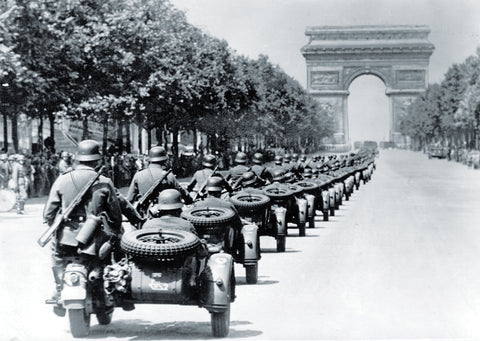
From North Africa to the Eastern Front, This Rough and Ready Motorcycle Was a Dependable Warrior for the Germans
While advancing across Europe, the Wehrmacht recognized the need for a small and quick vehicle capable of negotiating various terrain. In response, Bavarian Motor Works (BMW) introduced the R75, a three-wheel motorcycle and sidecar combination that was fast, maneuverable, and capable of handling rough conditions. The Germans widely deployed the R75 across multiple theaters of war, from the North African desert to the vast Eastern Front. Although the R75 had a hefty starting weight of more than 900 pounds, its 750cc engine drove its rear and sidecar wheel to a top speed of 60 miles per hour. To ensure the vehicle had sufficient stopping power, BMW fitted brakes on all three wheels—hydraulic brakes on the rear wheels and mechanical brakes on the front. Its two-stage transmission offered one gear ratio for rough terrain and another for paved roads. By August 1942, the Germans sought to simplify their manufacturing process and urged BMW and its rival, Zündapp, to standardize their parts and create a hybrid machine. They agreed to do so once BMW’s production reached 20,200 R75s, but Allied bombing knocked out its Eisenach factory after it had built 16,510 R75s.
